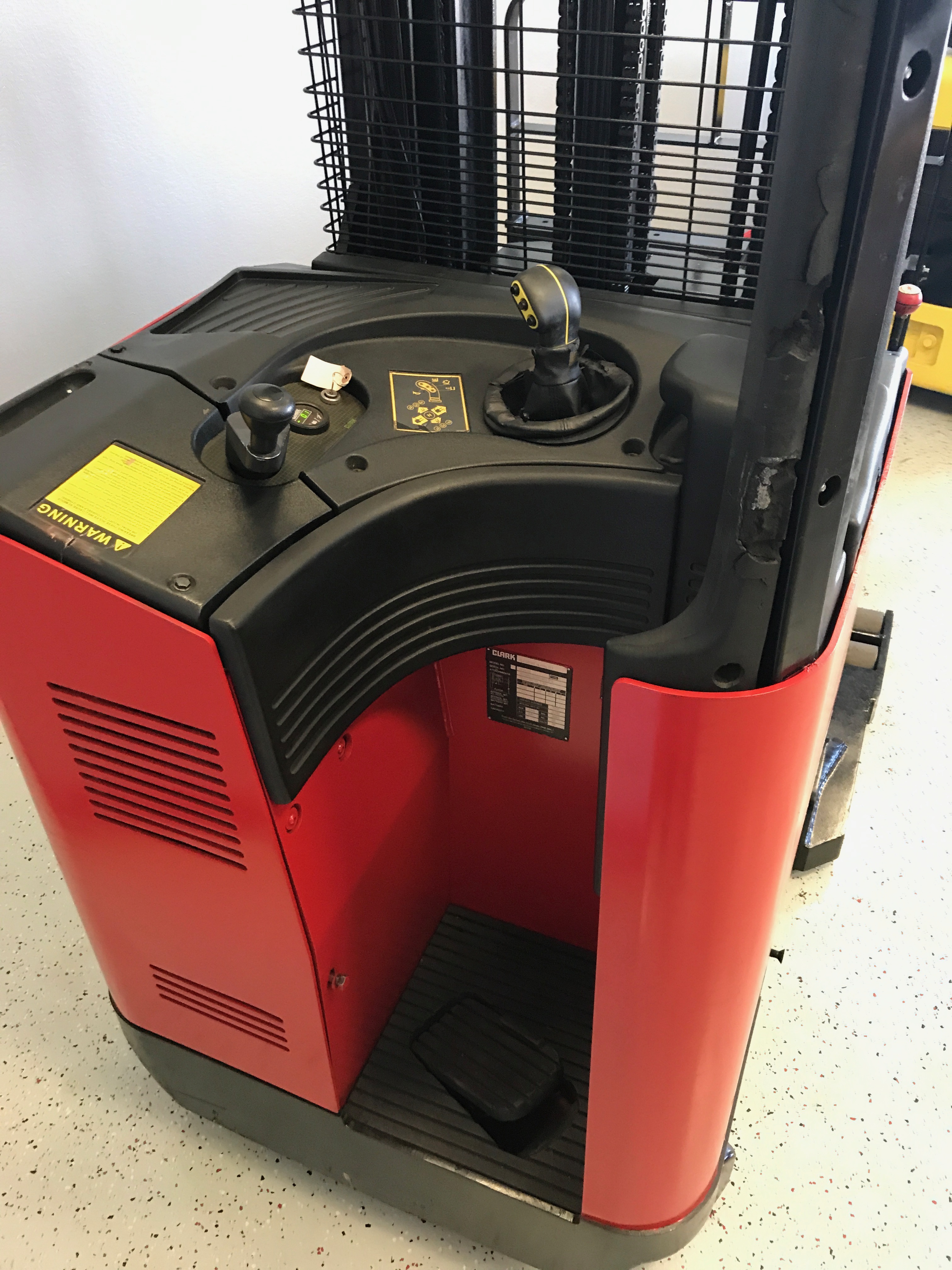

A reach truck forklift, however, can often handle this accessibility challenge. You need specialized equipment to access these pallets because many regular forklifts cannot reach two or four pallets deep. The challenge with this system, however, is getting the pallets out after you place them on the shelves. This system stores two (or even four) pallets together instead of just one, essentially doubling your storage space. One of the space-efficient warehouse racking systems you can choose is the double deep pallet racking system.
REACH FORKLIFT FREE
They free you to implement warehouse racking systems that go as high as you need them to in order to compactly store all of your inventory.Ī reach truck forklift allows you to use a double deep pallet racking system. These machines remove concerns about being able to reach your inventory. However, a reach truck forklift can reach heights of up to 36 feet, depending upon the machine you buy.Īs a result, a reach truck forklift can help you make the most of your warehouse space by allowing you to use warehouse racking systems that go several dozen feet up. A standard forklift, or an order picker forklift can both reach significant heights of up to 25 feet or more. However, once you get inventory up high, you need a way to quickly and efficiently get it down again.Ī reach truck forklift can be helpful in these instances. Going up with your warehouse racking systems allows you to store more inventory without using up aisle space. This means that you can reduce your aisle width by 35 percent without affecting your ability to access your inventory.Ī reach truck forklift can reach higher shelving.Īnother way to get more use out of your existing warehouse space is to use your vertical space. A reach truck forklift, however, thanks to its narrower turn radius, requires an aisle width of only 2.4 meters.

With less aisle width, you can devote more space to storage, which means you get more out of your existing warehouse space.Ī regular forklift requires an aisle width of about 3.7 meters. This tighter turning radius allows it to use less space to navigate aisles. As a result, it has a much tighter turning radius than does a normal forklift.

In particular a reach truck forklift contributes to these goals by allowing you to create narrower aisles within your warehouse.Ī reach truck forklift requires a narrower aisle because it is designed with the drive wheel underneath the driver. Otherwise, you spend more time and energy (and therefore money) trying to reach your items than you save by creating a compact warehouse storage system.Ī reach truck forklift can make it easier to access inventory while allowing you to use more of your warehouse space for storage. If at any point you cannot quickly access your inventory, then your storage system is not working in your favor and needs to be revamped. When storing items in your warehouse, one of the obstacles you will encounter is the need to access those items. Here are a few of the biggest benefits of using a reach truck forklift, particularly when dealing with space challenges in your warehouse.Ī reach truck forklift allows for narrower aisles. These smaller forklifts offer you a way to improve the storage capacity of your warehouse without enlarging your space. One tool that is a must-have in warehouses trying to better utilize space is the reach truck forklift. Despite the fact that the average warehouse size has grown from 127,000 square feet to 180,000 square feet over the last 15 years, warehouses are still often looking for more efficient and compact ways of storing their inventory. Every year since 2015, there has been an average shortage of 170 million square feet of warehouse space per year. The problem is that warehouses don’t always have the space to easily fit all of these items. In the last 15 years, people’s spending on items like jewelry, household goods, and even clothing, has doubled.Īll the items that people are buying need to be stored somewhere. In fact, in 2015, the number of SKUs the average warehouse managed rose by almost 19 percent. More specifically, warehouses now need to stock more SKUs in order to meet people’s demands for more and more items.

Americans are shopping more than ever before, and there is one specific way in which that penchant for buying things is impacting the warehouse industry: It is forcing warehouses to store more inventory.


 0 kommentar(er)
0 kommentar(er)
